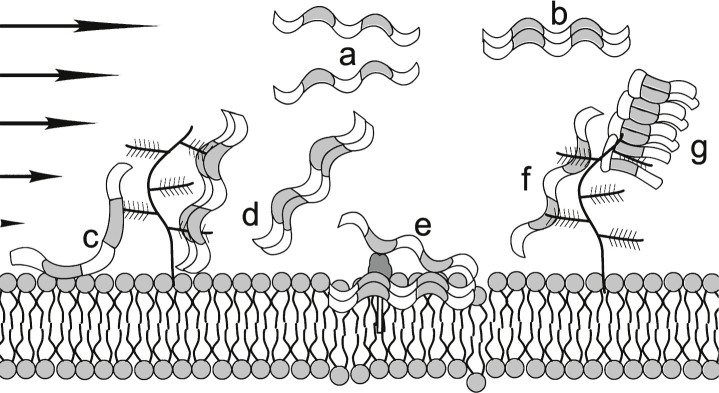Fig.9.
Flow impediments reacting with Aβ*. (a) Sheared Aβ* molecules that are attracted to one another to form an Aβ dimer (b) without interacting with the wall or flow impediments; (c) single Aβ* attracted to both the membrane and the proteoglycan; (d) Aβ* dimer that could either be released or form the nucleus for a higher order oligomer that remains attached to this location; (e) GM1, a ganglioside that has a hydrophilic bulky exterior group and a hydrophobic anchor and has immobilized a membrane-embedded Aβ dimer providing a nucleus for oligomer formation in this location; (f) a single Aβ* locked on one proteoglycan that might then convert to a hairpin conformation that is shown in (g) as a focal point for the formation of a protofibril. This latter process could be similar to that proposed by Metzner et al., for the downstream formation of fibrils in their experiments with commercial polymers (Fig. 4 in ref. [19]). HSPG not to scale.

